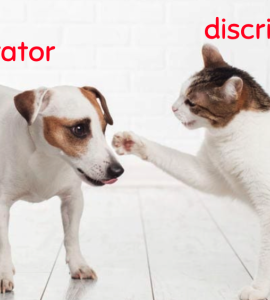
Authors
Resource type
Use type
Tools
Tags
Project name
I've revised the slides on understanding GANs, moving away from the analogy of rooster fighting, which is not suitable for my students due to its illegality in the US and cultural sensitivities. Instead, I've replaced the roosters with cats and dogs, a scenario more relatable to my students. This adjustment ensures that they can easily comprehend the adversarial relationship between the generator and discriminator. Additionally, considering the cultural context of many of my students in New Mexico, where rooster fighting is particularly repulsive, this change is more respectful and inclusive.
In the analogy involving an art teacher, I've substituted Picasso with Da Vinci. While my students recognized Picasso's name, they struggled to identify or describe his artworks. However, when discussing Da Vinci, they displayed greater familiarity with his style and iconic pieces such as The Last Supper, Starry Night, and The Mona Lisa. By incorporating Da Vinci's work, the lesson becomes more accessible as my students can better relate to his artistic style and renowned masterpieces.
In this context, these changes are particularly relevant for my students as they ensure a more culturally sensitive and relatable learning experience. By incorporating imagery and concepts that align with their experiences and cultural sensitivities, such as replacing roosters with cats and dogs, and Picasso with Da Vinci, the lesson becomes more engaging and accessible. This not only facilitates a deeper understanding of GANs but also fosters an inclusive learning environment where all students feel valued and understood.

